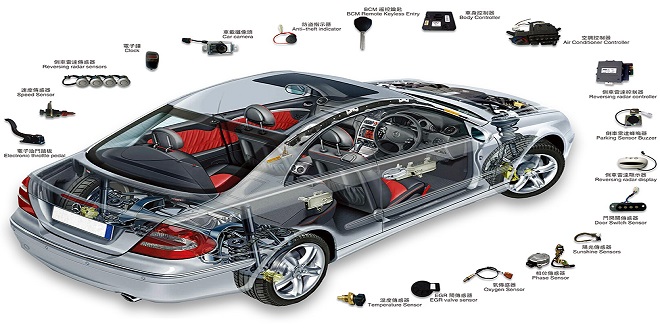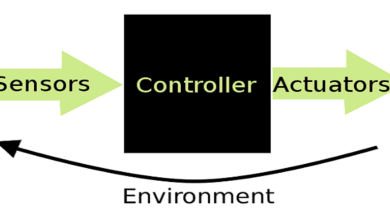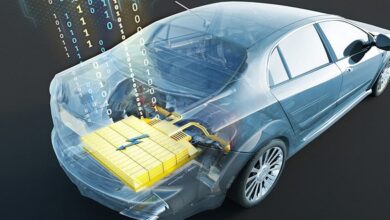Automobile – Electrical and electronic principles

Introduction
Safe working practices in relation to electrical and electronic systems are essential, for your safety as well as that of others. You only have to follow two rules to be safe.
- Use your common sense – don’t fool about it.
- If in doubt – seek help.
The following section lists some particular risks when working with electricity or electrical systems, together with suggestions for reducing them. This is known as risk assessment.
Basic electrical principles
To understand electricity properly we must start by finding out what it really is. This means we must think very small. The molecule is the smallest part of matter that can be recognized as that particular matter. Sub-division of the molecule results in atoms, which are the smallest part of the matter. An element is a substance that comprises atoms of one kind only. The atom consists of a central nucleus made up of protons and neutrons. Around this nucleus orbit electrons, like planets around the sun.
Electron flow and conventional flow
If an electrical pressure (electromotive force or voltage) is applied to a conductor, a directional movement of electrons will take place (for example when connecting a battery to a wire). This is because the electrons are attracted to the positive side and repelled from the negative side.
Fundamental quantities
The cause of the electron flow is the electrical pressure. The lamp produces an opposition to the rate of flow set up by the electrical pressure. Power is the rate of doing work or changing energy from one form to another. These quantities as well as several others.
Conductors, insulators, and semiconductors
All metals are conductors. Silver, copper, and aluminum are among the best and are frequently used. Liquids that will conduct an electric current, are called electrolytes. Insulators are generally nonmetallic and include rubber, porcelain, glass, plastics, cotton, silk, wax paper, and some liquids. Some materials can act as either insulators or conductors depending on conditions. These are called semiconductors and are used to make transistors and diodes
Factors affecting the resistance of a conductor
In an insulator, a large voltage applied will produce a very small electron movement. In a conductor, a small voltage applied will produce a large electron flow or current. The amount of resistance offered by the conductor is determined by a number of factors.
- Length – the greater the length of a conductor the greater is the resistance.
- Cross-sectional area (CSA) – the larger the cross-sectional area the smaller the resistance.
Resistors and circuit networks
Good conductors are used to carrying the current with minimum voltage loss due to their low resistance. Resistors are used to control the current flow in a circuit or to set voltage levels. They are made of materials that have high resistance. Resistors are often shown as part of basic electrical circuits to explain the principles involved. The circuits are equivalent. In other words, the circuit just showing resistors is used to represent the other circuit.
Magnetism and electromagnetism
Magnetism can be created by a permanent magnet or by an electromagnet (it is one of the three effects of electricity remember). The space around a magnet in which the magnetic effect can be detected is called the magnetic field. The shape of magnetic fields in diagrams is represented by flux lines or lines of force.
Last word
If two coils (known as the primary and secondary) are wound onto the same iron core then any change in magnetism of one coil will induce a voltage into the other. This happens when a current to the primary coil is switched on and off. If the number of turns of wire on the secondary coil is more than the primary, a higher voltage can be produced. If the number of turns of wire on the secondary coil is less than the primary a lower voltage is obtained.




